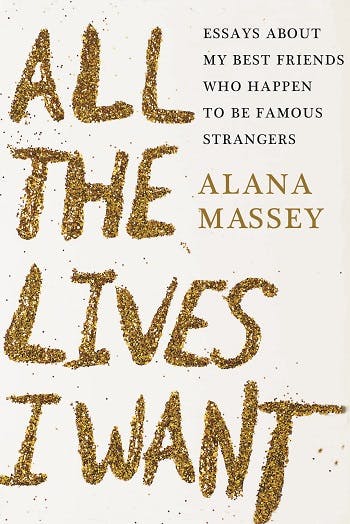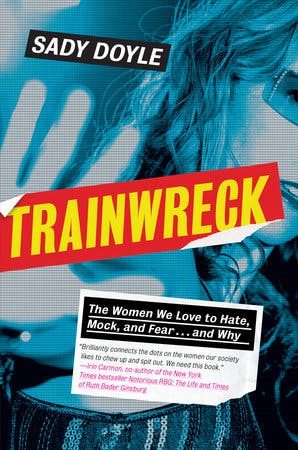Recently, I bought a deck of Celebrity Goddess Tarot Cards to give as a gift to a friend. The cards are illustrated by artist Faye Orlove, and they present the twenty-two figures of the Major Arcana as female celebrities and pop cultural characters, a matching of archetype to archetype. Law & Order: SVU’s Olivia Benson is Justice; Katherine Hepburn is Judgment; Miley Cyrus is Death. Orlove also sells prayer candles that style Kim Kardashian as The Saint of Self-Confidence, and a pack of pale pink buttons emblazoned with labels like bitch, narcissist, feminist and fame whore.
This mash-up of the cultural, religious and spiritual has come to define the style of what’s often called internet feminism: A heterogenous post-wave attitude perhaps best encapsulated by Teen Vogue writer Lauren Duca, who asserted that an interest in thigh high boots and national politics are “not mutually exclusive.” This version of feminism, most visible on Twitter and Tumblr, tends to be grounded in theory but built for life outside of the academy. It’s a practical, personal, insistently stylish ethos that’s produced writing from the more trite (think coffee mug slogans) to well-wrought essays and now, increasingly, books.
Two recent examples are Alana Massey’s collection All the Lives I Want: Essays About My Best Friends Who Happen to be Famous Strangers, and Sady Doyle’s Trainwreck: The Women We Love to Hate, Mock, and Fear…and Why. As a generation of writers and theorists raised equally by popular culture and feminist critique come of age, they’ve begun to create their own cultural canon. The iconic figures in their lives are given the status of traditional religious icons, and they levy academic-style critique, often refined in graduate programs, at the text of TMZ articles. For these writers, to put Kim Kardashian on a candle is not to raise her up but to make explicit how we already see her. To discuss her tweets as seriously as we might a religious text is not out of the question.
Doyle and Massey aren’t interested in sainthood, though, or at least not the kind the church recognizes. Their subjects are familiar to us, mostly as sinners and troublemakers, women whose complications are taken for contradictions, and whose expressions of pain are mocked as self-indulgent and pathetic. Both books include extended meditations on the lives of figures as diverse as Courtney Love and Sylvia Plath, alongside Lana del Rey, Britney Spears, Anna Nicole Smith, Rihanna, and Nicki Minaj.
Celebrities are our pantheon, these works argue, and their stories are our collective cultural myths. Since we spend hours and years of our lives absorbing them, when we talk about them, why not take them seriously? And if we don’t see our personal canon among the figures that the culture keeps telling us are iconic, what’s to stop us from claiming space for our own icons among their ranks?
Massey’s book grew out of her viral Buzzfeed essay, 2015’s “Being a Winona in a World Made for Gwyneths.” In the piece, she wrote about mapping herself onto the wild, messy, dark-hearted and dark-haired archetype that Winona Ryder represents, in contrast to Gwyneth Paltrow’s anodyne commitment to being inoffensively bland—and, well, blonde. All the Lives I Want is, on the one hand, an examination of the cultural context in which we understand female celebrities’ stories. But it’s also a confession of Massey’s own complex imaginings of their inner lives, and how they help her imagine and understand the complexity of her own.


Massey makes no secret of the fact that she reveres her subjects. The fact that she has a master’s in religion from Yale Divinity School lends weight and nuance to her discussions of the culturally deified. Her essay, “Heavenly Creatures: The Gospels According to Lana, Fiona and Dolly,” looks at its subjects’ lyrical relationships to men and god, punishment and salvation. Lana del Rey and Fiona Apple conflate the men in their lives with gods, she argues. In Fiona’s first single, “Criminal,” she “needs to be redeemed” from the ex she’s sinned against, while Lana’s debut has her crooning to a boy that “heaven is a place on earth with you.”
Dolly Parton’s relationship to both is more complicated, Massey says. Since “Criminal,” Fiona has moved on from “the ecstatic pain of living under the surveillance of man and God,” and Lana has sunk further into it. But it is ultimately Dolly’s transcendent, generous “I Will Always Love You” that offers us a vision of forgiveness, “the act of mortal love that most closely resembles grace.” (The song was written by Dolly but made famous by Whitney Houston, a figure whose talent and tragedy figures prominently in Trainwreck.)
Massey’s interest in fashion and politics, low culture and high, aren’t mutually exclusive. The use of academic close-reading and quotes from political theorist Thomas Paine to dissect lyrics like “In the land of Gods and Monsters / I was an Angel / Looking to get fucked hard,” is deployed as a deliberate technique—this way, she doesn’t need to waste time making that argument explicitly, because the text of her book does it for her.
All the Lives I Want acts
as much as a personal essay as it does a collection of cultural critiques.
Massey is refreshingly unapologetic about the low points of her own past, which
includes a history of patchily-treated mental illness and eating disorders. She
writes about her work as a stripper with unemotional frankness, discussing the
labor conditions the way she might any other job. Massey engages lovingly but
thoughtfully with the lives and work of her subjects, and she offers herself
the same even-handed treatment. As she writes her own feminist canon, she
insists on the veracity and value of her own presence and voice: Courtney Love
and the Olsen twins and Britney Spears, imperfect and compelling, belong in
books—which means that Alana Massey does, too.
While Massey melds personal essay and cultural criticism, Sady Doyle’s book is pure, uncut, and often, a ferocious critique. Her aim is to sketch a history of the trainwreck—a woman whose (self)-destruction is so chaotic and complete that it attracts attention, scrutiny, and moral condemnation. What happens, Doyle asks, when a woman who is falling to pieces meets a public hungry to help take her apart? The first trainwrecks, Doyle posits, were the women in mental hospitals in 19th century France, who were displayed by their supposed caretakers to groups of paying tourists. Doyle traces this impulse to watch women break down all the way up to today’s internet feeding frenzies when a starlet like Lindsay Lohan or Amanda Bynes goes off the rails.
Finding ways to punish women for livingly publicly, Doyle argues, helps ensure that others will be more likely to police themselves even when they’re largely private figures. The shifting goalposts of decency and acceptability to which famous women are held keep us guessing, and reinforce the message that there is no truly correct way to be a woman. Not while you’re alive, anyway.
While Massey discusses Lana del Rey’s obsession with heaven, Doyle is focused on what she’d have to do to get there: Die, of course. “She is right about one thing,” Doyle writes of del Rey’s remark in a Guardian interview that she wished she was dead. “Death is more glamorous than living in the wreck.” She goes on to point out that the glowing tributes to and heartfelt laments over the loss of Amy Winehouse’s voice to her addiction are nothing like the way we talk about the still-living, much-lambasted Courtney Love.
Doyle then links all three back further, to Billie Holiday, who, exploited by her record label and struggling with heroin addiction, was always broke. She became “one of the first women in America who was prevented from selling her gift,” Doyle says. Anyone with a prison conviction was barred from performing in clubs, a jazz singer’s bread and butter— and so Holiday was put on the publicity circuit to beg for redemption, and “forced instead to sell her pain.”
Doyle’s book does explicitly what Massey’s does implicitly: It works to explain the misogynist framework that colors our understanding of famous women’s lives, and by extension, our own. A chronicler mostly of others’ stories, Doyle has written a history of women’s public suffering, mapping the celebration of female misery across generations and genres. Both her and Massey’s books ultimately serve the same purpose: To underline that women’s lives happen, and that they do not happen in a vacuum. The writers, singers, and artists we love are important, and not just to us. Massey and Doyle write into history a tradition of female cultural and personal experience previously absent from the record.
The second-wave feminists, Doyle proposes, set a clear precedent for her task: Consciousness-raising seminars. “It’s a weird little term isn’t it?” Doyle writes, “It makes you feel square and older than you thought you were…it has the unmistakable fug of the 70’s all over it.” Consciousness-raising was nothing more than formalized conversation, which encouraged women to go around the room and share their experiences of their bodies, their sex lives, their female-ness and their femininity. It’s easy to dismiss as lazy—the kind of thing that might get termed slacktivism today. And yet its implications were and remain radical: By voicing their feelings, these women “rejected science, medicine, philosophy and most of literature in order to argue that the only real “authorities” on womanhood were women,” Doyle writes.
All the Lives I Want and Trainwreck live in the tradition of marginalized writers who don’t see themselves in the narrative, or don’t see themselves accurately represented—so they write themselves in. “I’ve spent a while looking at the lives of the strongest, most feminist women in history,” Doyle writes. “The icons; the immortal geniuses, the women to whom we are all meant to aspire. And the thing is? There’s not a strong feminist woman among them.” It’s a slightly confusing moment, rhetorically—the women in this book are united by their status as trainwrecks, after all; are we sure we’re supposed to aspire to their example, exactly?
But it’s true that in almost all of their cases, while their personal lives were complicated, their work has endured, and been celebrated. These days, students are taught Mary Wollstonecraft’s Vindication of the Rights of Women without ever being apprised of the details of her scandalous sex life. Women are mocked and silenced while they live, Doyle suggests, and then either erased from the record or canonized into unrecognizability in death. Today’s trainwreck might be tomorrow’s anonymous, or forgotten—or perhaps a near-future saint.
Which is why the work of writing these histories is so crucial: Because the consciousness raising group and its conversations are critically important, but they are also not enough. Feminism has grown and evolved in the nearly fifty years since their initial vogue, and while you cannot keep women from talking, we’ve still largely been discouraged from creating a record of those conversations, or making them and their revelations a part of our work. If and when we do, the work is all too often dismissed as self-indulgent and fundamentally unserious.
Because that’s one of the things that happens when you collapse the borders between popular culture and serious devotion: A girl writing a diary realizes that what she’s doing is writing. Treating a celebrity like she’s a saint means reckoning with the fact that sainthood and celebrity are both ways of labeling how we see a person, rather than an explanation of how they see themselves. And while writing our own histories forces us to acknowledge that histories are inevitably subjective and incomplete, a product of their author and their time, it also frees us to write the ones we need now, so that the people who come after us will know us not as sinners or saints, madonnas or whores, but as humans—people, in all of our messy, complicated fullness.
